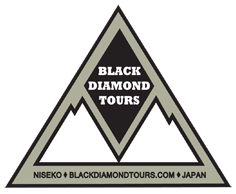Here is an unofficial list we translated of all the (recorded) accidents that have occurred in the Niseko Resort(s) ski area since 1937. For the first 62 years Japanese skiers and boarders with limited or no avalanche training and/or avy gear skied (for the most part) wherever they wanted. As the popularity of snowboarding and powder skiing began to grow in the early 90’s more and more Japaneses headed off-piste to ski steeper untracked powder. After three accidents involving fatalities occurred between 1998-99, the Niseko Rules were created in 1999 “to keep people safe” and “protect our freedom to ride out of bounds”.
If you look at the data of accidents, it appears that the rules have been working, but please consider these 6 points:
1) Before the rules were put into place, most of the accidents that occurred were in areas that are not in the (now) permanently closed zones. This leads to the question of how and why they chose to close the areas they did.
2) There have been many more accidents in the back bowls that don’t get reported most likely due to either apathy or fear of reprisal and/or humiliation on the Avalanche Bulletin which unfortunately seems to be a reoccurring theme. No one can learn from an accident that doesn’t get reported. We learn from our mistakes.
3) The one and only (tastelessly) reported accident that occurred in Yunosawa was caused by skiing in to an unmarked glide crack in the permanently closed area. Had it been open, this accident may not have resulted in a fatality.
4) Mizunosawa is now controlled BECAUSE there have been fatalities. We can only assume that Prince Resort did not understand the risk or responsibility that went with placing a lift(s) and run that close to a natural slide path. Niseko Village now controls this area (special control area) to protect their customers and themselves from further liability. Shouldn’t this logic be extended to the ski in-ski out areas of Yunosawa and Harunotaki?
5) Out of the 14 deaths since 1937, only one was a foreigner, yet having a read through the daily avalanche bulletins, one would be lead to think that foreigners were the problem. Lack of education and respect for management seems to be the culprit.
6) Under the Avalanche Bulletin’s own admission (and several times each season mentioning) “despite repeated warnings the number of people who duck ropes does not seem to decrease”, the system is flawed. While the Niseko Rules make sense, the current “management” of the area is clearly not meeting the customers’ demands.
We purchased our lodge in 2003 thinking that it was only a short matter of time before Yunosawa would finally open and the lift would be rebuilt. 13 years later, neither has happened and in fact, they have actually expanded the permanently closed area… Last summer Niseko Village invested over $10 million dollars to build two new beginner lifts but they still tell us that they don’t have the manpower or budget to manage Yunosawa…
In order for businesses and locals to wholeheartedly support the ski resorts and “demand” that guests follow the rules, there needs to be solid reasoning behind the rules, other than simply protecting the resorts from taking responsibility. If we the locals and you the guests don’t push the resorts, better management won’t happen.
We are now “demanding” that the resorts work harder to meet customers’ growing expectations of “Japan’s best powder resort” and make it world class. Show us a plan that makes sense and and we’ll support you 100%.
For the record, we never condone ducking ropes. We can’t make a positive change if we are seen as the bad guy.
To finish this post off on a positive note, since Mizunosawa officially opened, Niseko Village can now boast the very best fall-line steep skiing in Niseko. Guests love it and they want more, so lets give it to them.




